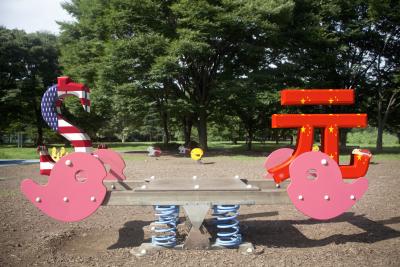A trip to the park is always a top favorite of kids, and an hour or two of playground activity will typically give the parents a breather while allowing the kids to burn off energy. While energetic playtime will build your kids’ social and physical skills, a park is also an ideal place for unstructured teaching. By allowing your kids to explore and question what they see in a park, you can teach them about the world around them in a safe, secure environment. When you return home, you can look up more information and expand on the wonders you found hiding at the park.
Vegetation
Take a walk down a path or a hike up a trail, and see how many different plants and trees your kids can spot. Ask them what they already know about growing things, and explain to them what’s going on behind the scenes. You can discuss how flowers open up, why tree leaves turn color and fall off, and why some plants are considered weeds and others are cultivated. If your kids are younger, suggest they count the colors of flowers, collect different leaves from the ground, or look for four leaf clovers. Explain what poison ivy and oak are, what they look like and why they should be avoided.
Creatures
Often, a park is full of hidden residents that adults take for granted. Point out different birds, look for animal tracks, and see if you can spot where the squirrel has her nest. Try and spot a bee snacking at a flower, and explain the benefits to both bee and bloom. Keep an eye out for butterflies, cocoons, grasshoppers and other creatures you may encounter on your adventure. Talk to your kids about things that might live in a park that they should avoid, like squirrels, snakes and mice and explain why it’s important not to disturb the animals that you spot.
Aquatic Wonders
If your park has a steam, lake or pond, you can spend some time trying to identify the different things that live in the water. Depending on the time of year, you may encounter frogs, tadpoles, fish, turtles or snakes. Take turns tossing pebbles into the water, and see if you can spot fish darting away from the commotion. See if you can skip a stone across the water, and how many times each of you can make it bounce. Talk about bad things that may be hiding in the water, such as poisonous snakes, leeches and bacteria, so your kids know it’s not a good idea to jump in and play in any water they encounter.
People Watching
A park is one of the best environments to teach your kids about the differences between people of all ages, because it is a neutral area that is enjoyed by a diverse group. Point out children that aren’t behaving in the manner you expect from your children as well as those that are promoting the behavior that is acceptable in your family. Encourage your kids to ask questions about people that look, dress or act differently, as a park is the perfect environment to teach diversity. Consider making an analogy between the different trees you saw that are growing side by side and the different people you see playing and enjoying the park. Explain why your kids shouldn’t talk to strangers in a park, and why it’s important that they stay within your sight at all times.









